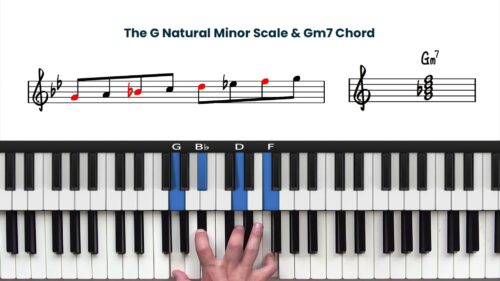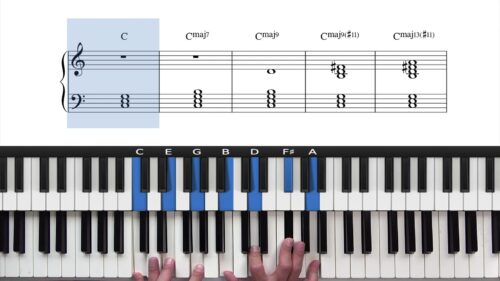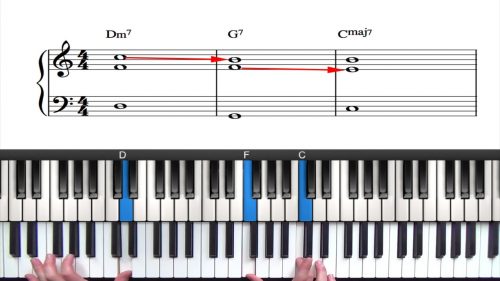Introduction to Modulations for Beginners
Welcome to the 1st lesson in our course on "Jazz Modulations for Beginners". In this course, we will focus on two jazz standards — "Body & Soul" and "In a Sentimental Mood" — both of which feature key modulations which are essential to understand for jazz pianists.
Understanding Jazz Modulations
Modulation occurs when the key signature of a piece changes during the song. This lesson begins by exploring the key of Db major. We start by examining the diatonic harmony within this key, including the major scale, triads, 7th chords, and the 251 progression which is the most common progression in jazz music.
Db Major Scale, Diatonic Triads & 7th Chords
We begin by playing the Db major scale over one and two octaves. This scale fits comfortably under the hand and serves as the foundation for the harmony in "Body and Soul."
From each note of the Db major scale, we can construct triads and 7th chords. These chords form the backbone of the tune’s harmonic structure and so it’s useful to have an awareness and understanding of how these chords fit into the key of Db major:
- Dbmaj7 (I)
- Eb-7 (ii)
- F-7 (iii)
- Gbmaj7 (IV)
- Ab7 (V)
- Bb-7 (vi)
- C-7b5 (vii)
Root Position Chords and Spread Voicings
When playing jazz piano we typically use 7th chords as a minimum to create a basic jazzy-sounding arrangement. Playing the 7th chords in root position is a great way to familiarise ourselves with their basic structure.
However, for a smoother and more connected sound, spread voicings are most often the most appropriate and preferable choice of voicing. Spread voicings allow us to distribute the chord tones evenly between both hands, resulting in a more balanced and resonant sound.
Common Progressions in Db Major
The most common progression in jazz is the 2-5-1 progression. In the key of Db major, this progression involves moving from Eb-7 (ii) to Ab7 (V) and resolving to Dbmaj7 (I). Understanding this progression is crucial for navigating the harmony of "Body and Soul."
Analysing the A Section of "Body and Soul"
To finish this lesson we briefly analyse the A section of "Body and Soul" and we find multiple instances of the 2-5-1 progression as well as the other diatonic chords that we explored in this lesson.
For example, in bars 2 and 3, the harmony moves from Eb-7 to Ab7, and then resolves to Dbmaj7. This pattern also repeats in bars 7 and 8. In addition to the 2-5-1 progressions we also identify the iii, VI, and vii-7b5 chords and how they featured in the harmony of the A section of "Body & Soul".
Recognising the diatonic 7th chords and common chord progressions helps us to play the tune more fluidly and with a deeper understanding of its harmonic structure.
Practice Tips
-
Db Major Scale: Start by playing the Db major scale over one and two octaves to become comfortable with the fingering and the notes of the scale.
-
Diatonic 7th Chords: Practice playing the diatonic triads and 7th chords within the Db major scale, focusing on accuracy and fluidity when playing up and down the scale.
-
2-Handed Spread Voicings: Play the diatonic 7th chords in both root position and then with 2-handed spread voicings - as demonstrated in the exercises.
-
Drill 2-5-1 Progression: Drill the 2-5-1 progression in Db major (Eb-7 to Ab7 to Dbmaj7) until it becomes second nature and you can clearly visualise the 7th falling to the 3rd of the next chord.
- Lead Sheet Analaysis Get into the habit of analysing lead sheets to identify the 2-5-1 progressions - as we do at the end of this lesson for the A section of "Body and Soul".






